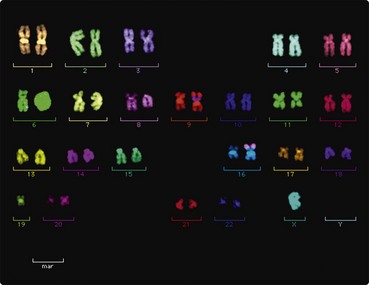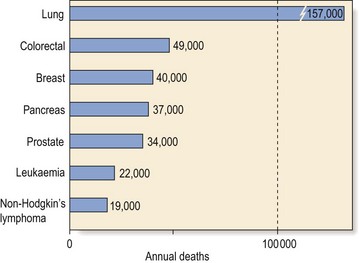19 Leukaemia is not a common disorder but it is a significant cause of death from cancer (Fig 19.1). There is a male preponderance in most types of leukaemia. Geographic variations exist; for instance, chronic lymphocytic leukaemia is the predominant form of leukaemia in the Western world but is much less frequent in Japan, South America and Africa. Cytogenetic analysis and particularly molecular genetic techniques have revealed various acquired non-random chromosomal derangements which play a fundamental role in leukaemogenesis (Fig 19.2). There are a number of different types of possible chromosomal change. Fig 19.2 Fluorescence in situ hybridisation (FISH) study of a complex karyotype (including t(8;16) ) in a patient with acute myeloid leukaemia.
Introduction
Incidence
Aetiology
Genetic abnormalities

Introduction




